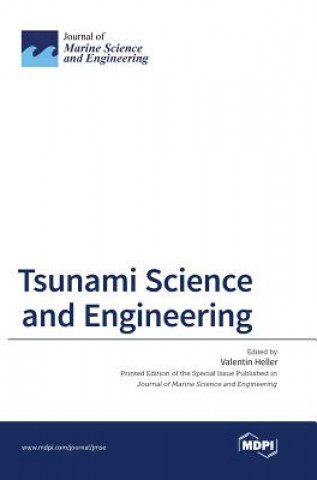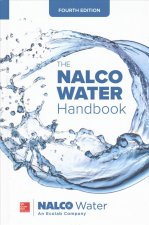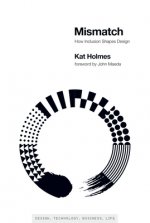
Kod: 13937793
Tsunami Science and Engineering
JMSE | Special Issue : Tsunami Science and Engineering Recent earthquake-tsunamis including the 2004 Indian Ocean Tsunami, with over 230,000 casualties, and the 2011 Tohoku Tsunami in Japan, with over 18,5 ... więcej
- Język:
 Angielski
Angielski - Oprawa: Twarda
- Liczba stron: 330
Wydawca: Mdpi AG, 2016
- Więcej informacji o książce

365.24 zł
Zwykle: 368.98 zł
Oszczędzasz 3.74 zł

Dostępna u dostawcy
Wysyłamy za 14 - 18 dni
Zobacz książki o podobnej tematyce
-

GROUND BEETLES ATTACKING CROPS IN MYSORE
51.91 zł -

Global Marketing Management System
459.29 zł -4 %
Podaruj tę książkę jeszcze dziś
- Zamów książkę i wybierz "Wyślij jako prezent".
- Natychmiast wyślemy Ci bon podarunkowy, który możesz przekazać adresatowi prezentu.
- Książka zostanie wysłana do adresata, a Ty o nic nie musisz się martwić.
Więcej informacji o Tsunami Science and Engineering
Za ten zakup dostaniesz 214 punkty
 Opis
Opis
JMSE | Special Issue : Tsunami Science and Engineering Recent earthquake-tsunamis including the 2004 Indian Ocean Tsunami, with over 230,000 casualties, and the 2011 Tohoku Tsunami in Japan, with over 18,500 people missing or dead, serve as tragic reminders that such waves pose a major natural hazard to human beings. Landslide-tsunamis, including the 1958 Lituya Bay case, may exceed 150 m in height and if similar waves are generated in lakes or reservoirs (so-called impulse waves), then they may overtop dams and cause significant devastation downstream, such as in the 1963 Vaiont case with around 2,000 casualties. The after-effects due to such catastrophes are not limited to the region immediately impacted by the wave; for example, the 1963 Vaiont case affected hydropower plant planning and management globally and the 2011 Tohoku Tsunami initiated changes to nuclear power plant policies worldwide. Active prevention of the wave generation is extremely unlikely and limited to rare cases where creeping slides could be stabilized. Scientists and engineers thus work mainly on passive methods to face this hazard. In many cases, the propagation time between generation and shoreline is sufficiently long, allowing early warning systems for evacuation to be an effective passive method. For impulse waves in smaller water bodies, however, the propagation time is too short for an adequate evacuation so further passive methods are critical. Such methods include sea walls, reinforced infrastructure and the provision of adequate freeboards of dam reservoirs. These methods require detailed knowledge of (i) the wave features as a function of the generation mechanism, (ii) the shoreline run-up and (iii) the interaction with structures. Despite a significant increase in research activities after the 2004 Indian Ocean Tsunami, there certainly can be - and needs to be - more research with the aim to reduce the destruction caused by tsunamis to us and our environment.
 Szczegóły książki
Szczegóły książki
Kategoria Książki po angielsku Technology, engineering, agriculture Technology: general issues
365.24 zł
- Pełny tytuł: Tsunami Science and Engineering
- Język:
 Angielski
Angielski - Oprawa: Twarda
- Liczba stron: 330
- EAN: 9783038422334
- ISBN: 3038422339
- ID: 13937793
- Wydawca: Mdpi AG
- Waga: 912 g
- Wymiary: 244 × 170 × 27 mm
- Data wydania: 01. July 2016
Ulubione w innej kategorii
-

Flavor Thesaurus
98.93 zł -33 % -

Lego Boost Activity Book
94.42 zł -15 % -

Schaum's Outline of Statistics, Sixth Edition
164.18 zł -3 % -

NALCO Water Handbook, Fourth Edition
997.47 zł -

Social Engineering
173 zł -

New Dark Age
58.23 zł -8 % -

Mismatch
77.07 zł -5 % -

Rainwater Harvesting for Drylands and Beyond, Volume 2
204.48 zł -4 % -

Laws of Simplicity
77.07 zł -5 % -

Compact Cassettes Collectible Book - Compact Cassetten Sammelbuch
54.62 zł -

Brave New Work
70.06 zł -23 % -

Quantum Computing for Everyone
85.09 zł -4 % -

Principles and Practice of Breeding Race Horses - Containing Information on Crossing, Stallions, Selection and Many Other Aspects of Horse Breeding
85.39 zł -

Creating the Twentieth Century
316.04 zł -

20 Easy Raspberry Pi Projects
111.06 zł -23 % -

Scrum for Hardware Design
112.06 zł -

Rope and Harness Work on the Farm - With Information on Rope Construction and Various Knots Used on the Farm
85.39 zł -

Conveyor Engineering
349.82 zł -

Recommendation Engines
69.15 zł -4 % -

Beginner's Guide To Circuits
88.50 zł -10 % -

Programming With Openscad
112.06 zł -15 % -

Fantastic Inventions of Nikola Tesla
73.06 zł -5 % -

Firearm Anatomy - Book II the Sten Submachine Gun
161.57 zł -

Reverse Engineering
514.02 zł -

New History of Modern Computing
200.57 zł -11 % -

OCR Design and Technology for AS/A Level
185.83 zł -

Philosophy and Technology
117.67 zł -

Handbook of Modern Pig Farming
145.74 zł -

Innovation Deulsion
112.76 zł -5 % -

Bakewise
181.72 zł -11 % -

Future Histories
118.17 zł -11 % -

48 Laws of Power in Practice
90.20 zł -

Made to Break
154.96 zł -

Drilling Engineering: Advanced Applications and Technology
1078.06 zł -

Extraction of Artemisinin from Artemisia Annua
285.47 zł -

Towards the Autonomous Ship: Operational, Regulatory, Quality Challenges
80.98 zł -

ISE Machining and CNC Technology
352.73 zł -

America's New Slavery? FMRI Technology! Functional Magnetic Resonance Imaging! Or America's Salvation? All Americans Should Be Concerned!
95.12 zł -

How Things Work 2nd Edition
77.17 zł -5 % -

Pilot-Assisted OFDM Systems
402.25 zł -

Reactive Separation Processes
1606.72 zł -

Civil and Military Airworthiness
295.35 zł -

Drying Kinetics of Green Bitter Gourd (Momordica charantia L.) Slices in a Fluidized Bed Dryer
283.77 zł -

New Trends in Recycled Aggregate Concrete
295.35 zł -

Practical Watch Repairing
220.02 zł -

Ford Manual
197.16 zł -

Gold Electroplating
402.25 zł -

Dynamos And Electric Motors - How To Make And Run Them
178.11 zł -

Explosives and Blasting Procedures Manual
168.89 zł
zadowolonych klientów
Od roku 2008 obsłużyliśmy wielu miłośników książek, ale dla nas każdy był tym wyjątkowym.
Copyright! ©2008-24 libristo.pl Wszelkie prawa zastrzeżonePrywatnieCookies


 21 milionów książek
21 milionów książek Dostawa 10.99 zł
Dostawa 10.99 zł (32) 444 93 66 (8-15.30h)
(32) 444 93 66 (8-15.30h)